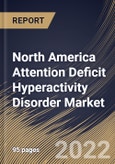The ADHD symptoms that appear predominantly inattentive make it challenging for the sufferer to arrange or complete a task, pay close attention to specifics, or follow directions or dialogues. The individual gets easily side-tracked or overlooks small elements of daily activities. Symptoms that are predominantly hyperactive-impulsive make the sufferer fidget and speak a lot.
Long periods of stillness are challenging for these individuals. Younger children may continually jump, run, or climb. They are also highly restless and have difficulties with impulse control. Impulsive individuals may speak suddenly, seize objects from others, or interrupt others frequently. The person needs help to follow instructions or wait their turn. Impulsiveness increases the likelihood of accidents and injury for some people.
A combination presentation of ADHD makes the person exhibit both of the signs mentioned earlier in equal measure. It is possible for a person to have different types of symptoms at different stages. Nearly 11% of school-age children have ADHD, which has become a major health issue. In three out of four cases, the symptoms last throughout adulthood. Family stress, academic failure, disturbance, depression, interpersonal connection problems, substance misuse, delinquency, unintentional accidents, and work failure are just a few of the dire consequences that are linked to ADHD.
There are some common incidences that children with ADHD may continue to experience during the transition from childhood to adulthood. These symptoms include driving issues, issues relating to peers and social circumstances, high-risk sexual conduct, and substance addiction. As these symptoms make it difficult to sustain a comparatively everyday life, it has necessitated the need for ADHD treatments.
The North America region has significantly contributed to the development of ADHD therapeutics through the number of studies and research on this topic collectively. One such survey highlighted by the Environment Protection Agency of the US stated that approximately 15% of children aged 3 to 17 in the nation were suffering from some type of neurodevelopmental disorder. The disorders included learning disabilities, cerebral palsy, intellectual disability, seizures, stammering, autism, and ADHD. Among all these neurodevelopmental disorders, children with ADHD had the highest frequency.
The US market dominated the North America Attention Deficit Hyperactivity Disorder Market by Country in 2021; thereby, achieving a market value of $7 billion by 2028. The Canada market is experiencing a CAGR of 5.6% during (2022-2028). Additionally, The Mexico market would exhibit a CAGR of 4.7% during (2022-2028).
Based on Drug Type, the market is segmented into Stimulants and Non-stimulants. Based on Stimulants Type, the market is segmented into Amphetamine, Methylphenidate, Lisdexamfetamine and Dexmethylphenidate. Based on Non-stimulants Type, the market is segmented into Atomoxetine, Guanfacine, Clonidine and Others. Based on Demographics, the market is segmented into Adults and Children. Based on Distribution Channel, the market is segmented into Retail Pharmacy and Hospital Pharmacy. Based on countries, the market is segmented into U.S., Mexico, Canada, and Rest of North America.
The market research report covers the analysis of key stakeholders of the market. Key companies profiled in the report include Eli Lilly And Company, Pfizer, Inc. (Global Blood Therapeutics, Inc.), Johnson & Johnson (Johnson & Johnson Services, Inc.), Lupin Limited, Novartis AG, Takeda Pharmaceutical Company Limited, Mallinckrodt PLC, Purdue Pharma L.P., Aytu BioPharma, Inc. and Supernus Pharmaceuticals, Inc.
Scope of the Study
By Drug Type
- Stimulants
- Amphetamine
- Methylphenidate
- Lisdexamfetamine
- Dexmethylphenidate
- Non-stimulants
- Atomoxetine
- Guanfacine
- Clonidine
- Others
By Demographics
- Adults
- Children
By Distribution Channel
- Retail Pharmacy
- Hospital Pharmacy
By Country
- US
- Canada
- Mexico
- Rest of North America
Key Market Players
List of Companies Profiled in the Report:
- Eli Lilly And Company
- Pfizer, Inc. (Global Blood Therapeutics, Inc.)
- Johnson & Johnson (Johnson & Johnson Services, Inc.)
- Lupin Limited
- Novartis AG
- Takeda Pharmaceutical Company Limited
- Mallinckrodt PLC
- Purdue Pharma L.P.
- Aytu BioPharma, Inc.
- Supernus Pharmaceuticals, Inc.
Unique Offerings
- Exhaustive coverage
- The highest number of market tables and figures
- Subscription-based model available
- Guaranteed best price
- Assured post sales research support with 10% customization free
Table of Contents
Companies Mentioned
- Eli Lilly And Company
- Pfizer, Inc. (Global Blood Therapeutics, Inc.)
- Johnson & Johnson (Johnson & Johnson Services, Inc.)
- Lupin Limited
- Novartis AG
- Takeda Pharmaceutical Company Limited
- Mallinckrodt PLC
- Purdue Pharma L.P.
- Aytu BioPharma, Inc.
- Supernus Pharmaceuticals, Inc.








